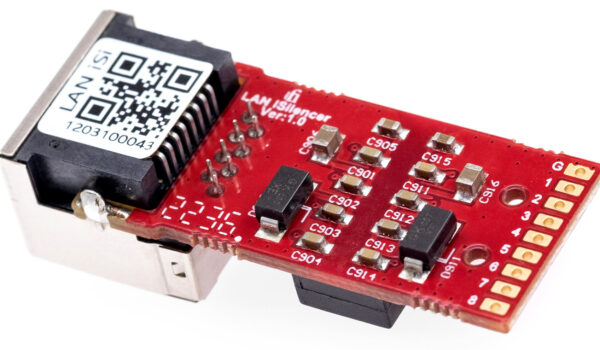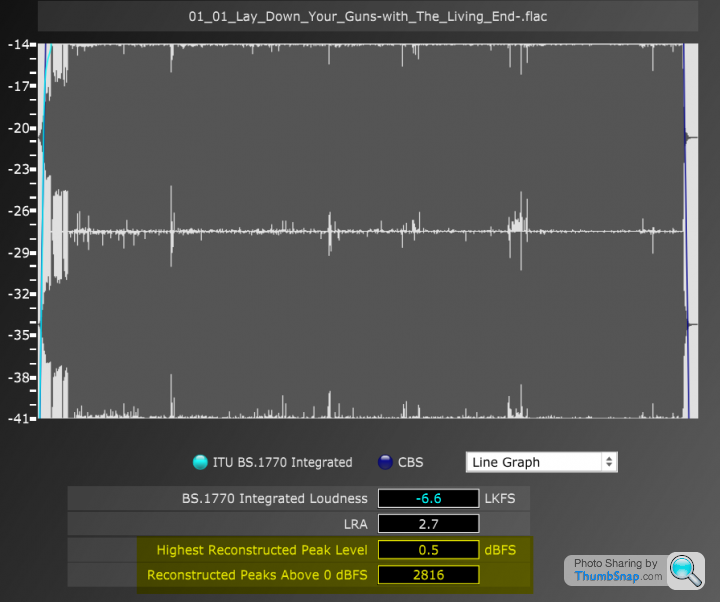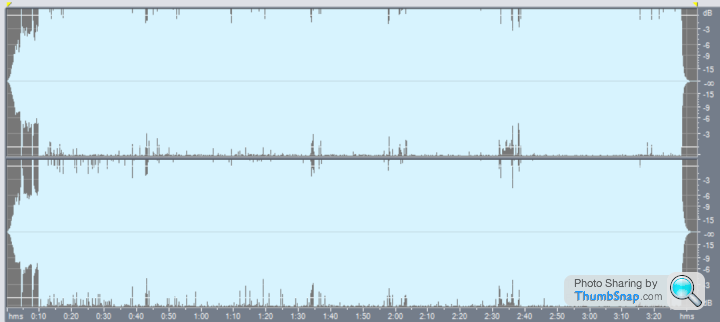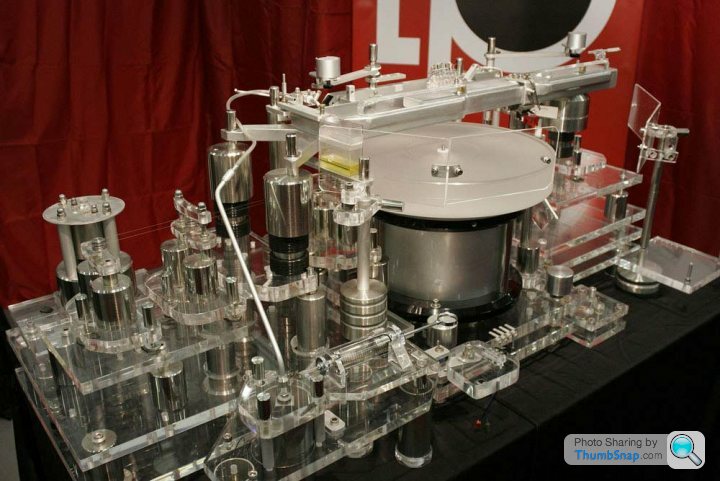More 'Audiophile' bullsh*t
Discussion
OutInTheShed said:
<stuff>
My belief is that the electronics should be as neutral as possible.Source / preamps should sound the same regardless of interconnects.
Amplifiers should sound the same regardless of load and speaker cable. (early class D amplifiers were notoriously bad in this respect)
That just leaves the room and the speakers having the maximum influence over the sound - and it's so much easier to achieve the 'right' sound this way.
The less variables there are, the easy it is.
However when you start introducing electronics where the sound is heavily influenced by a cable, spikes, isolation platforms (turntables excepted), then finding the optimum sound becomes a nightmare.
Tony1963 said:
Optimum sound being what, exactly? And don’t say that it’s what the band or recording engineer intended, because only a tiny number of people know what that was.
By 'optimum sound' - I meant when the system sounds how I like it, and no particular aspect of the sound I hear irritates me.I know when this has been achieved, because I'm happy listening to a wide variety of genres and recordings, regardless of quality.
It's not about recreating a live sound, or the sound that engineer intended blah, blah. That's just horses
 t.
t.Tony1963 said:
If you see a favourite local band perform at two venues I can guarantee there’ll be differences in the sound but, hopefully you’d enjoy both gigs. There’ll be more variables between the two venues, rather than fewer, but enjoyment will be the name of the game.
I would have thought that anyone with half a brain would realise that it's impossible for two venues to sound the same.Also, aside from the venue itself, there are many other factors which will influence the sound of a live performance, not least of all how many people are present in said venue.
Tony1963 said:
You just need to enjoy the sound of the music, and that’s that.
Which is my aim - see above re: 'optimum sound'Tony1963 said:
I’ve seen a couple of recent reports on the classic NAD 3020 that says it’s awful, completely lifeless. Yet it sold by the truckload.
I've repaired a couple of them - the 3020 and 3020i - when I connected them up in my system, I was left wondering what all the fuss was about.I think it was another case of the HiFi press bulling up a product and creating a 'must have' culture.
I have owned other NAD products (and still own a 2200 power amp) and the 1000 preamp I had was ok, and even better after a few mods (I brought it up to 1000S spec) and a few other mods. Interestingly, the 1000 preamp is very similar to the preamp section of the 3020i - so I guess the power amp section of the 3020i was the weak point.
The CD players weren't bad, but a tape deck and tuner I had the opportunity to audition (mid 80's) were well below par, and the tape deck in particular was no match for the budget Technics deck I owned at the time.
Tony1963 said:
Are modern integrated amps ‘better’ than the integrated amps of 25 years ago? In my experience, without doubt. The separation, slam, detail, control, sweet top end were all a surprise to me. However, I’ll counter that by saying that perhaps I didn’t hear the best sounding integrated amps back then.
And then there are the features, namely built in DACs and streaming. Unheard of back then.
When it comes to power amps, I think I’ve made it clear what my preference is, and I’m sticking with it for the foreseeable, and that pretty much ties me down to certain pre amps.
Ironically, until perhaps about 10 years ago or so, little has changed in integrated (or power) amp design (excluding Class D here), and what has changed is largely due to improvements / enhancements to power transistors.And then there are the features, namely built in DACs and streaming. Unheard of back then.
When it comes to power amps, I think I’ve made it clear what my preference is, and I’m sticking with it for the foreseeable, and that pretty much ties me down to certain pre amps.
Whilst these improved transistors have brought about improvements in specifications and reliability, it could be argued (subjectively) that the sound is unchanged compared to older designs.
I think it's fair to say the industry already knew the best way to build a good amplifier as far back as the early 80's (but that's not to say all manufacturers embraced this knowledge...).
Harry Flashman said:
On the amp thing, I was looking at going Class D (NAD C298 to match my streamer), but I do like my old Musical Fidelity A3.2, that can be recapped and comprehensively upgraded for £600.
Literally no idea if the latter is worth doing?
I would wager that your MF A3.2 (even before recapping) likely sounds better or equal to the NAD.Literally no idea if the latter is worth doing?
Also - £600 seems a lot for a recap, as it's unlikely that the entire amp will need recapping.
911hope said:
The NAD M33 looks excellent. Here is a detailed review. I have just checked the measurements section for performance and there are no flaws.
Stereophile is probably the best publication for technical reviews.
https://www.stereophile.com/content/nad-masters-se...
Amir@ audio science review seemed to like it.Stereophile is probably the best publication for technical reviews.
https://www.stereophile.com/content/nad-masters-se...
https://www.audiosciencereview.com/forum/index.php...
Harry Flashman said:
I didn't say! Sonus Faber Cremona M...a warm and rich sounding thing that I think was made a little too warm by my Musical Fidelity amp, especially in the last few months as the amp seems to have deteriorated...
Or you're losing (more of?) the top end of your hearing?Edited by Harry Flashman on Saturday 25th February 17:13
That would make the system sound warm.
anonymoususer said:
https://ifi-audio.com/products/lan-isilencer/
Modestly priced upgrade and perhaps rather stylish too
As the name suggests it silences your Lan gets rid of all that pesky interference and stuff


Modestly priced at £89 but still a waste of £89. Would rather spend that on more music.Modestly priced upgrade and perhaps rather stylish too
As the name suggests it silences your Lan gets rid of all that pesky interference and stuff


Still, it's nice to see they have gone to the trouble of fitting an isolation transformer, to isolate the already isolated network.
In the early days of CD players, there were many complaints about 'gritty' hard sound.
What many failed to realise, was that the CD player had an output of 2v RMS and many amps of the time (especially British gear) had input sensitivities of 150mV or so (some even lower!) and these amps were grossly overloaded by the CD player resulting in distortion.
Meanwhile, the CD players themselves were really not that bad (with the exception of the absolute bargain basement stuff).
I've had various players (mostly Sony and some Marantz) over the years, and because I have built my own amps and preamps, have made allowances for the high output. Net result was the clean sound one can expect from CD.
Even today, I have some vintage CD players, and whilst they don't sound as good as the latest DACs, they do sound quite respectable.
With regard to poor sounding remasters; I often find that the bass is lacking when compared to the vinyl equivalent, and I believe this is simply down to poor mastering, as mastering for vinyl requires that the bass is rolled off as part of the RIAA equalisation - and when the album is remastered for CD, insufficient bass is applied.
What many failed to realise, was that the CD player had an output of 2v RMS and many amps of the time (especially British gear) had input sensitivities of 150mV or so (some even lower!) and these amps were grossly overloaded by the CD player resulting in distortion.
Meanwhile, the CD players themselves were really not that bad (with the exception of the absolute bargain basement stuff).
I've had various players (mostly Sony and some Marantz) over the years, and because I have built my own amps and preamps, have made allowances for the high output. Net result was the clean sound one can expect from CD.
Even today, I have some vintage CD players, and whilst they don't sound as good as the latest DACs, they do sound quite respectable.
With regard to poor sounding remasters; I often find that the bass is lacking when compared to the vinyl equivalent, and I believe this is simply down to poor mastering, as mastering for vinyl requires that the bass is rolled off as part of the RIAA equalisation - and when the album is remastered for CD, insufficient bass is applied.
OutInTheShed said:
Not sure that's exactly the full story.
Analogue levels are relative to some mumbo-jumbo 0dBu level, which music is allowed to exceed by all those dB in the red side of the comedy flappy needle meter.
Digital levels are defined by full scale, from 0000 to FFFF. Because that's what a DAC does.
The above is largely irrelevant in the context of this discussion. 0dB analogue, 0dBFS digital (but not really comparable).Analogue levels are relative to some mumbo-jumbo 0dBu level, which music is allowed to exceed by all those dB in the red side of the comedy flappy needle meter.
Digital levels are defined by full scale, from 0000 to FFFF. Because that's what a DAC does.
OutInTheShed said:
The RMS level of a music signal will vary according to the content.
Your 150mV rms 'normal' level might allow 1.5V rms 'loud bit' 20dB up, and 1.5V rms would be over 2Vpeak if it was a sine wave.
A typical CD player when playing music recorded at 'normal' levels (e.g. peaking just below 0dbFS will output just below 2v constantly.Your 150mV rms 'normal' level might allow 1.5V rms 'loud bit' 20dB up, and 1.5V rms would be over 2Vpeak if it was a sine wave.
A 1kHz sine wave at 0dBFS will register 2v output.
An older preamp (Quad 33/44 being a typical example) with an input gain stage before the volume control will usually be driven into overload - this will of course depend on the overload margin - however I've seen this happen even with decent overload margins.
The specs for the Quad 44 cite an input sensitivity of 100mV (for full output) for the radio and aux inputs, with a maximum of 5v.
However... the output level of the preamp is 5v.... So 100mV / 5000mV = a gain of 50.
2v input will (attempt) to drive the output to 100v RMS.... not possible, and much distortion.
It was for this reason that back in the 80's, inline attenuators became popular, to drop the 2v down to a more manageable level.
OutInTheShed said:
Back when I actually owned a tape deck, the same setting of the volume knob on my amp produced much the same volume from both CD and Tape. Although tapes vary from one to the next as I recall.
I don't understand how the audio world manages to be so vague about all this, particularly people who write articles and books about amps.
There's nothing vague about it. Tape decks and tuners had quite common output voltages, although tape decks were often a fair bit higher.I don't understand how the audio world manages to be so vague about all this, particularly people who write articles and books about amps.
The issue is the differences between professional and consumer levels, where 0.775mV is 0dB (professional) but 1v is 0dB (consumer) - BUT - even then there are other so called "standards" with differing levels / input impedance etc.
Amazingly, the consumer world tended to be (note the past tense) fairly standard with this, however newer Class D amps are often rated for 4v input (and sometimes higher) so these so called standards have gone out of the window (ignoring balanced inputs for now).
These increased levels are all in the name of chasing ever higher sinad figures.
OutInTheShed said:
Roughly speaking, a 'trad' power amp (or PA stage of typical domestic amp?) with say +/-40V rails will have a voltage gain in the region of 30? so will clip at (instantaneous) peak inputs of 1 and a bit volts?
The actual gain of the pre-amp stage is harder to see by eyeballing the schematic, but looking at a couple of amps, 'more than 1' at full volume seems to be the case?
I wonder if my scope still works....
It seems to me there is also scope to get more peak volts due to the phase response of any filters
Yes - the power amp is not a problem though, assuming there is some sort of level control of course. Otherwise a CD player injected directly into a power amp with no level control will result in extreme overload.The actual gain of the pre-amp stage is harder to see by eyeballing the schematic, but looking at a couple of amps, 'more than 1' at full volume seems to be the case?
I wonder if my scope still works....
It seems to me there is also scope to get more peak volts due to the phase response of any filters
I can demonstrate with some screenshots from my own scope if so desired.
EDIT: Mixed up my pro and consumer levels. Now fixed.
Edited by TonyRPH on Sunday 9th April 21:33
OutInTheShed said:
Not really sure what you're saying here, unless your idea of 'music' is 'peak loudness war'
Did you mean a CD player might have 2V DC on it?
My idea of music is not peak loudness war - but it's a sad fact that many CDs are mastered in this manner (as per the screenshot below).Did you mean a CD player might have 2V DC on it?
Regarding DC - of course not, what use would that be? I mean that 0dBFS will produce 2v RMS at the output of the majority of CD players and DACs.
Therefore depending on the music content, the average amplitude will range from 0v RMS to 2v RMS, but with a track like I used for my illustration below, with such limited dynamic range, the output (on average) of the CD player / DAC will be a fairly constant 2vRMS but obviously will vary according to content.
I never said anything about DC - I assumed (perhaps incorrectly!) that given the nature of the discussion, that it was safe to assume that all figures quoted were in vRMS and not vDC...
OutInTheShed said:
Music will have crest factors or peak to mean anywhere from 6dB to 20dB
So the average RMS signal level is several dB below 'peak' or 'full scale'.
Yes of course - but my point was that 0dBFS will yield 2vRMS - and there is a lot of (pop & rock) music that has an average amplitude hovering just below 0dBFS.So the average RMS signal level is several dB below 'peak' or 'full scale'.
OutInTheShed said:
Tape decks are probably quite variable, but an FM tuner is working to a defined full scale of FM modulation that the signal must not go beyond.
That will be an ITU standard or something?
No doubt some pirate stations push the limits.
My comments are based on a typical FM broadcast - and most stations aim for maximum modulation.That will be an ITU standard or something?
No doubt some pirate stations push the limits.
The output voltage (RMS) specs for an FM tuner are usually based on maximum modulation (although some will state the modulation level for a given output level).
Regarding CD output - take the attached image for example, this is a level scan of a .flac file (the CD is the same of course) and as you will see, this is nudging 0dBFS throughout the entire song, and there were also 2816 peaks above 0dBFS.
This will drive the output of a DAC or typical CD player to an almost constant 2vRMS (with obvious variations according to content levels).

OutInTheShed said:
Can't work out what that graph is supposed to be saying.
Scales on the X axis and z label on the y would help.
See new graph with both time and dB scales.Scales on the X axis and z label on the y would help.
OutInTheShed said:
The dBFS thing in CD seems to be 0dBFS is a sine wave going from 0000 to FFFF. That is 2Vrms,
2Vrms is 5.656V peak to peak. For a sine wave.
A square wave 0000 to FFFF is still 5.656V pk/pk, but its RMS is 2.828V which is 3dB above a sinewave of the same peak.
The numbers below your graph show it has some peaks, the biggest of which it sees as a little bit of something other than a sine wave, 0.5dB
I'm not sure taking the RMS over a very short period to capture a peak is mathematically meaningful, unless you state the period you've averaging the mean square over, but maybe there's a standard for that?
What is doesn't mean is any sample is outside the 0000 to FFFF or 65536 range.
You can get spikes bigger than the peak value of signal by putting it through a filter which delays the harmonics differently to the fundamental for instance. E.g. turning your square wave into 'a funny shape'. An audio amp will have bandwidth and slew rate limitations. Presumably the filters on the output of a CD player might also do some odd things to fast squarewaves resulting in spikes?
Generally there's no great desire to listen to square waves, but anything that been clipped might have a square top or bottom...
The initial graph I posted (and this latest one) is sampling the entire song.2Vrms is 5.656V peak to peak. For a sine wave.
A square wave 0000 to FFFF is still 5.656V pk/pk, but its RMS is 2.828V which is 3dB above a sinewave of the same peak.
The numbers below your graph show it has some peaks, the biggest of which it sees as a little bit of something other than a sine wave, 0.5dB
I'm not sure taking the RMS over a very short period to capture a peak is mathematically meaningful, unless you state the period you've averaging the mean square over, but maybe there's a standard for that?
What is doesn't mean is any sample is outside the 0000 to FFFF or 65536 range.
You can get spikes bigger than the peak value of signal by putting it through a filter which delays the harmonics differently to the fundamental for instance. E.g. turning your square wave into 'a funny shape'. An audio amp will have bandwidth and slew rate limitations. Presumably the filters on the output of a CD player might also do some odd things to fast squarewaves resulting in spikes?
Generally there's no great desire to listen to square waves, but anything that been clipped might have a square top or bottom...
Graph with time vs. amplitude.

911hope said:
How can you have a peak above 0dBFS?
Other than this, the key thing to understand is whether the content is compressed to 0dBFS, or clipped at 0dBFS.
Peaks above 0dBFS are caused by Intersample overs if my understanding of the linked article is correct.Other than this, the key thing to understand is whether the content is compressed to 0dBFS, or clipped at 0dBFS.
OutInTheShed said:
If intersample overs are giving a true representation of the original audio, then surely the audio is in fact clipped to get the actual samples?
Is it an artefact of digital mixing, creating a stream of samples which imply clipping, even if none of the component tracks were ever clipped?
But will this in fact be audible, because the clipping will create harmonics up at the sample rate and beyond?
The Benchmark article goes into some detail about this and mentions the generation of ultrasonics.Is it an artefact of digital mixing, creating a stream of samples which imply clipping, even if none of the component tracks were ever clipped?
But will this in fact be audible, because the clipping will create harmonics up at the sample rate and beyond?
OutInTheShed said:
Does putting such a track through FLAC have any adverse effect?
I've not seen any issues. I have ripped a CD to a wav file and taken a checksum.I've then encoded it with flac, and then decoded it back to wav, and taken a checksum.
Result: No difference. The flac encoder doesn't seem to care. Incidentally, the track I used for the purpose above was just such a track.
I ran the track through the 'declip' filter in Audacity (and reduced the amplitude at the same time) and the track does sound markedly better after doing so - the hardness has gone.
Looking at the output on a scope does show that the analogue waveform is clipped (on any DAC) - on the original track, prior to declipping.
OutInTheShed said:
Is the +0.?? dBFS reported by whatever program Tony was using actually 'intersample' or does that program only know about the actual samples? Is the program upsampling, or is the upsampling only done in the DAC?
I used the Orban sound meter for the first sample - have a read of the 'READ ME' pdf on their website.OutInTheShed said:
How close is the 'intersample clipped' sound which comes out of my CD player to what the band intended?
The sound that the Added to this, there are so many other variables, that I doubt it really matters, except when the end result it too distorted.
I have one particular album that used to be quite unlistenable on any of my CD players, and latterly on my older DACs, however newer DACs have improved the situation markedly.
OutInTheShed said:
May we can de-clip that and recover the original content?
You can de-clip a sine wave by filtering off the harmonics.
Some CODEC processes will reduce some harmonics and put in peaks.
Some of those peaks may be what was clipped originally.
SeeDeclip4 does this but it's not necessarily accurate based on the description.You can de-clip a sine wave by filtering off the harmonics.
Some CODEC processes will reduce some harmonics and put in peaks.
Some of those peaks may be what was clipped originally.
IIRC the author of this software used to be on PH.
website said:
SeeDeClip4 allows the successful repair of many of these distortions so the waveform fed into your HiFi is lower distortion than all the people playing the same track without this type of repair. Reconstruction of the peaks generally results in a smoother more consistent sound with more bite and dynamics, rim shots and snares sound better, voices ride over drum beats and the whole sound is more realistic.
To achieve this realism no mystic Mpingo blocks or expensive wire in magic USB cables are used, our software merely edits the waveform and adds back what it thinks was there in the first place based on various forensic clues left in the waveform.
To achieve this realism no mystic Mpingo blocks or expensive wire in magic USB cables are used, our software merely edits the waveform and adds back what it thinks was there in the first place based on various forensic clues left in the waveform.
Gassing Station | Home Cinema & Hi-Fi | Top of Page | What's New | My Stuff







